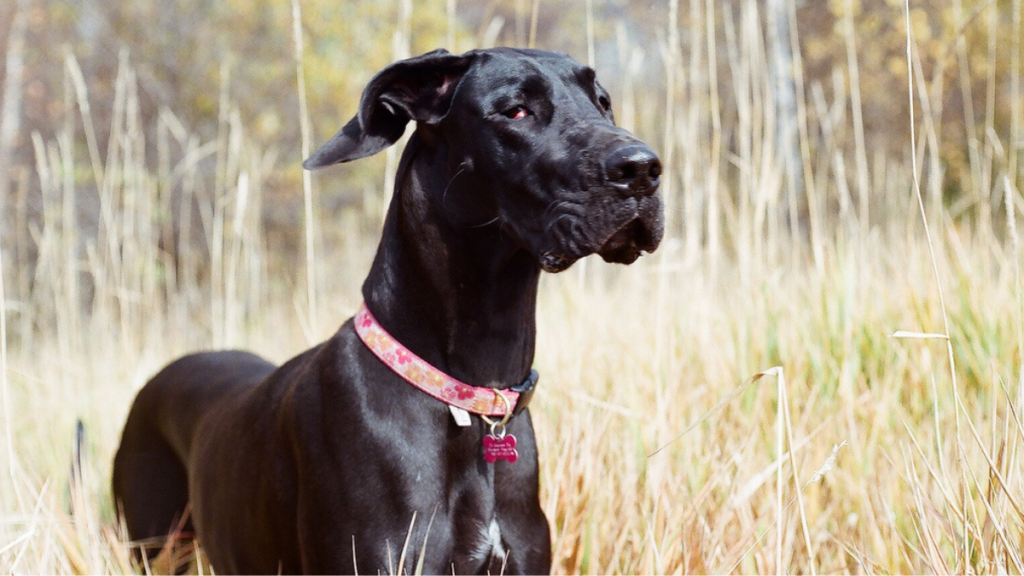If you’re looking for a low-maintenance, big short-haired dog breed, there are plenty to choose from. Despite their large size, short-haired big dog breeds require little maintenance. You can enjoy the joy of owning a German Shepherd or a Neapolitan Mastiff without the hassle of too much shedding. Even though they don’t need extensive grooming, they do need to be brushed regularly and bathed occasionally. Despite requiring less frequent brushing, they still shed, and not all of them are hypoallergenic. Maintaining a home free of pet dander and allergens also requires regular vacuuming. Large, short-haired dogs are particularly suited to hot climates, where long-haired breeds may struggle. Here are some of the best big short-haired dog breeds that require minimal grooming.
1. Great Dane

Great Danes are tall, sleek, low-maintenance dog breeds with short coats that require only weekly brushing to maintain their appearance. Although Great Danes are large, they are gentle, affectionate, and well-suited to indoor living, requiring only daily walks and playtime for exercise. To ensure their comfort in various situations, effective training involves positive reinforcement and early socialization. It is enjoyable for them to cuddle with their human companions and be close to them. Even though they have a shorter lifespan than smaller breeds, their loving and patient nature makes them an excellent companion. It may be easier for first-time owners to train them than other large breeds, but their size and strength may require experience.
2. Rhodesian Ridgeback
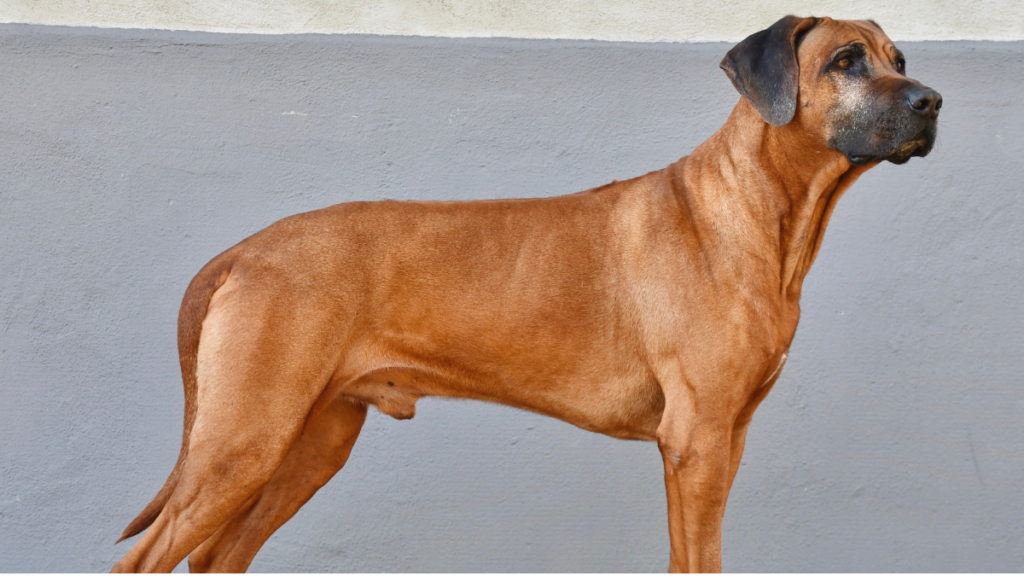
Rhodesian Ridgebacks are also called African Lion Dogs, because of their short, dense coats and unique ridges along their backs. Originating in South Africa, Rhodesian Ridgebacks excel at hunting, making them ideal companions for active owners, as well as intelligent, protective, and family-oriented. With its short, low-maintenance coat, the Rhodesian Ridgeback sheds moderately, simplifying grooming for its large, independent nature. The grooming requirements of these animals can easily be met with weekly brushing and occasional bathing. In spite of their stubborn nature, Ridgebacks are loyal and dependable with proper socialization; however, they’re not suitable for first-time owners since they need a confident handler.
3. Weimaraner

This breed is often called the “Grey Ghost” for its low-maintenance and short gray coat. Weimaraners originated in the Weimar region of Germany. These athletic dogs come in a variety of gray shades and can make excellent pets when exercised properly. Running, hiking, and hunting are among their favorite activities. Every day, they must exercise vigorously for at least two hours. Despite their tendency to use their mouths for communication and play, Weimaraners are affectionate and loyal to children. In order to prevent boredom and destructive behavior, they need mental stimulation.
4. German Shorthaired Pointer
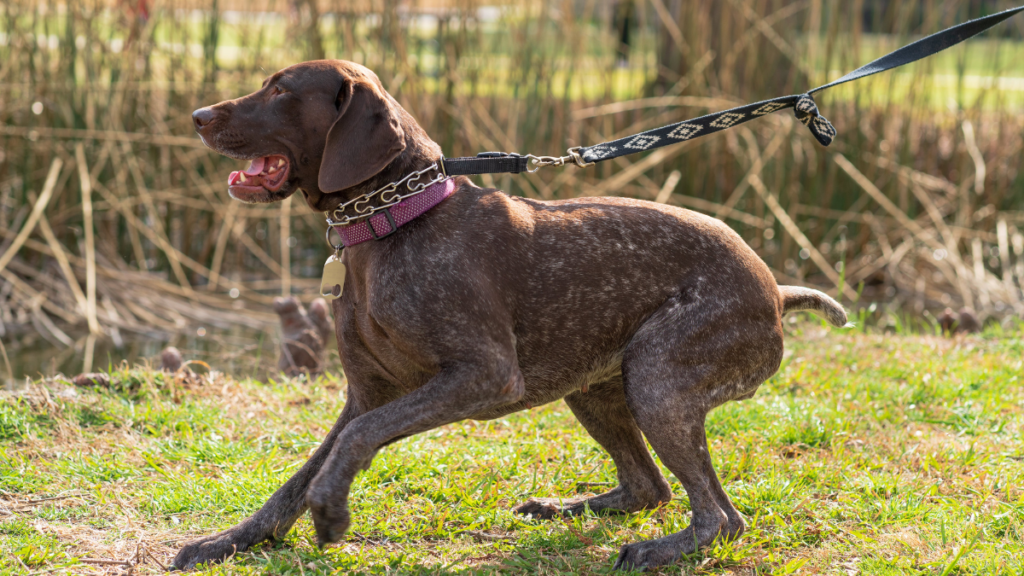
The German Shorthaired Pointer is a versatile gundog bred for waterfowl hunting that typically has a short, dense coat which is typically colored liver with white. The grooming process is simple, requiring only weekly brushings and occasional baths. It is essential that German Shorthaired Pointers receive plenty of exercise and mental stimulation in order to prevent anxiety and destructive behavior. The key to keeping these eager-to-please dogs comfortable in different environments is consistent, positive training and socialization. In addition to being energetic, intelligent, and hunting-instinctive, German Shorthaired Pointers (GSPs) are ideal for active families.
5. Greyhound
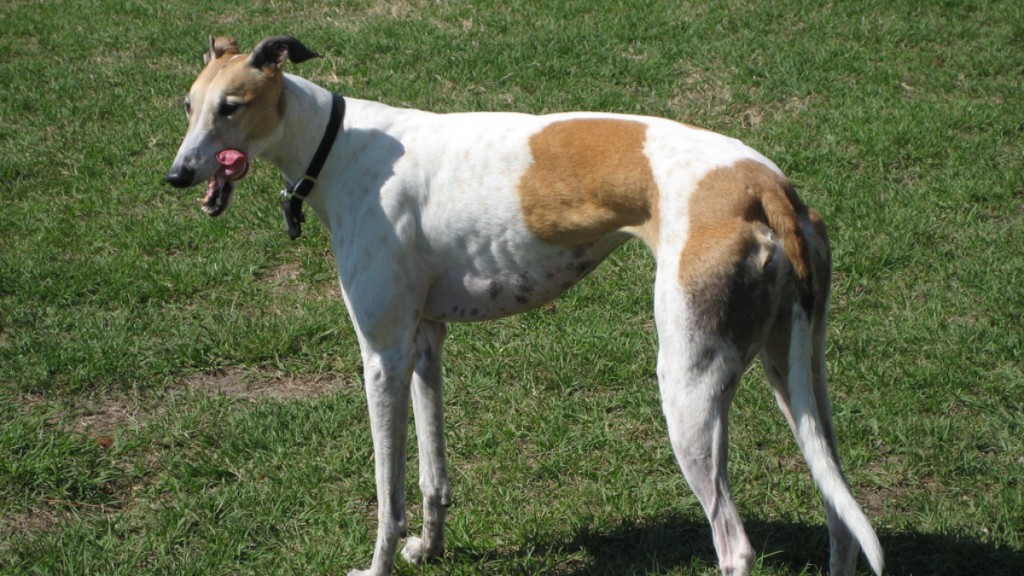
Greyhounds are known for their remarkable speed and sleek appearances. The short, thin coat of these dogs comes in different colors and requires minimal grooming, usually just a damp cloth. However, they can exhibit some independence during the training process, emphasizing the importance of early socialization for their well-rounded development. They are gentle and suitable for new owners, but their sighthound instinct requires leash walks due to their strong chase instinct. To maintain their health, it is necessary to trim their nails regularly, check their ears, and brush their teeth regularly.
6. Rottweiler
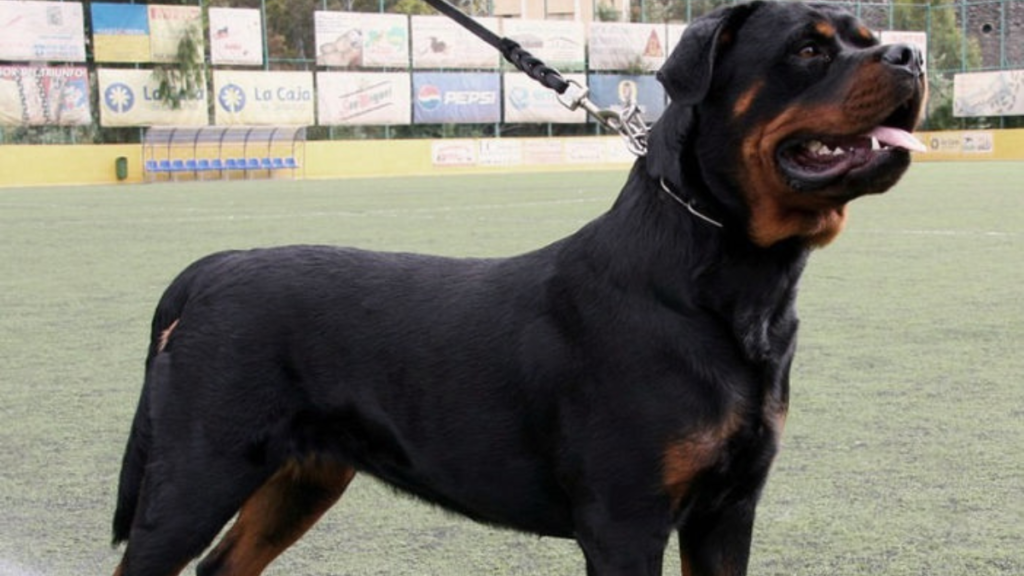
Rottweilers are known for their loyalty and affection but can show a temper when pushed to the limit. As cattle herders and meat cart pullers originally bred in Germany, these dogs are confident protectors. Despite their short coats and robustness, these dogs can cause accidental injuries due to their playfulness. The best place for Rottweilers is a home that does not have young children or other pets. In spite of their short fur, regular brushing is necessary to control dander and sheds. The use of food-based rewards can be an effective method for training this self-reliant breed at an early age. In general, Rottweilers make devoted family companions when properly cared for and trained.
7. Doberman Pinscher
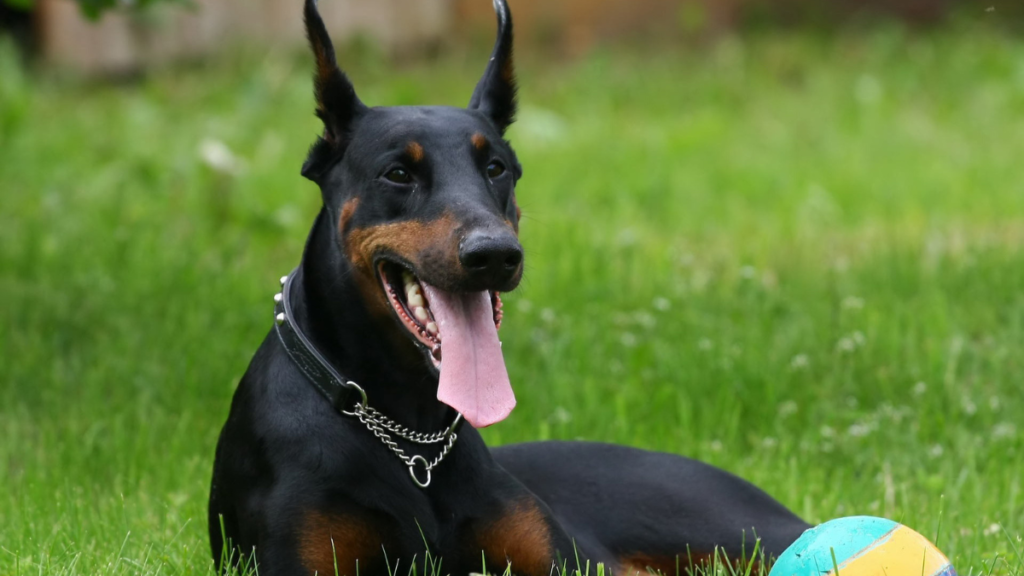
The Doberman Pinscher was originally developed by a tax collector in Germany by the name of Karl Friedrich Louis Doberman. With a sleek coat, this breed requires little grooming, only one brush per week. Dobermans need plenty of exercise because of their size and athleticism. Aside from excelling in guarding roles, they are also formidable to potential intruders, which is well documented. Even so, Dobermans exhibit a lot of affection and respect for children, especially those within the family unit.
8. Ibizan Hound
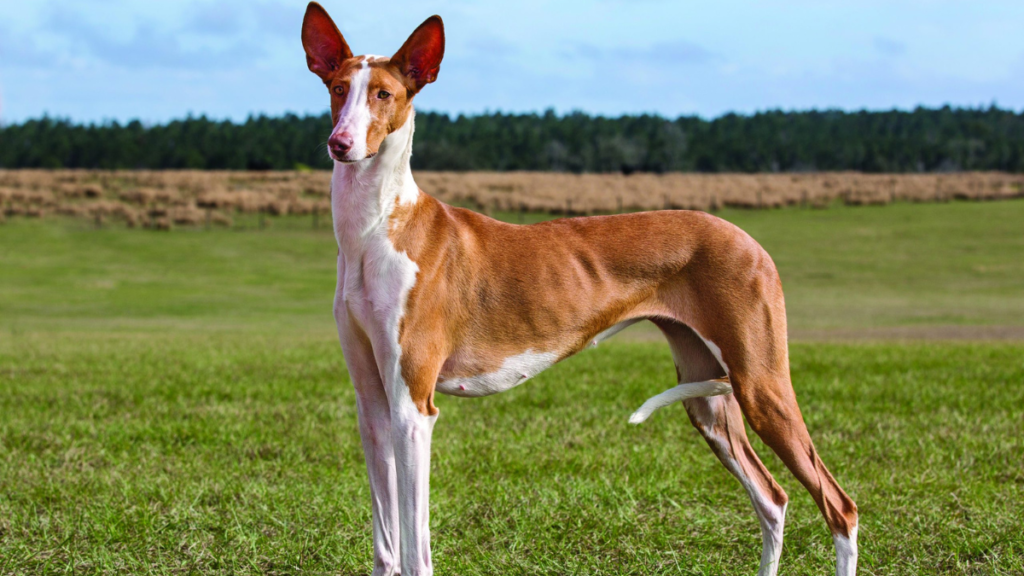
Ibizan hounds are native to the tranquil Spanish island of Ibiza and boast a heritage dating back more than 3,000 years to ancient Egyptian hounds imported by traders. Their short coats can either be smooth or wiry, requiring minimal grooming – just a light brushing each week will suffice. They have gained a well-deserved reputation for their remarkable hunting abilities, particularly when it comes to rabbit hunting. Using agile leaps and graceful pounces, they skillfully pursue and capture their prey due to their acute eyesight. As a symbol of ancient lineage and natural grace, the Ibizan hound symbolizes a blend of the ancient past and the beauty of nature.
9. Belgian Malinois

Belgian Malinois are commonly mistaken for German Shepherds due to their similar appearance. They come in various colors and have short, weather-resistant coats ranging from fawn to mahogany. In order to maintain their coats and overall appearance, the American Kennel Club recommends brushing them weekly with medium-bristle brushes, rubber grooming mitts, or hound gloves.
Recommended: 13 Least Aggressive Dog Breeds You Need to Know About
Malinois are intelligent, energetic, and love to jump. They need both physical and mental stimulation, as well as consistent training from an early age. For their well-rounded development and confidence, adequate socialization is essential. Due to its high energy level and training expectations, the Belgian Malinois might not be the best breed for first-time dog owners. However, those up to the challenge can be a highly rewarding breed, forming strong bonds with their human families.
10. Anatolian Shepherd
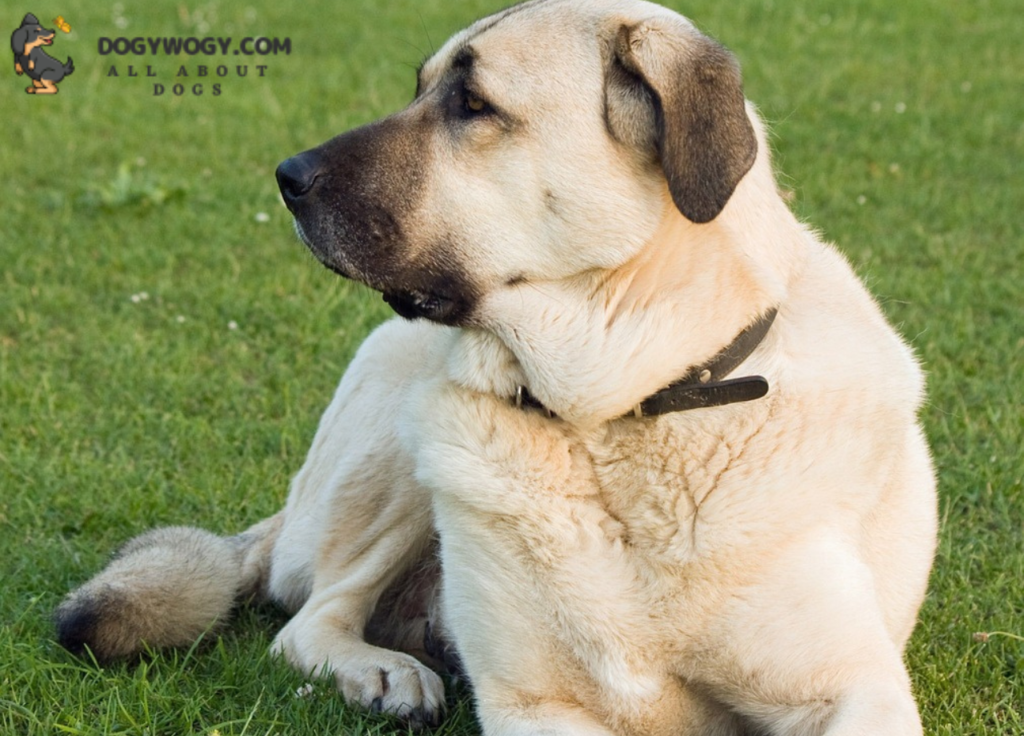
Turkey’s Anatolian Shepherd breed is renowned for its robust protective instincts and resilience. Having a short to medium-length double coat that comes in various colors, they must be brushed every week.
Historically, these dogs have been used for livestock guarding, so they have developed intelligence and independence over time, often thriving independently. As a result of their size and self-sufficient nature, they can be challenging for new dog owners. While Anatolian Shepherds are not the most affectionate breed, they are loyal and dedicated companions for those with experience handling large, protective dogs.
Anatolian Shepherd training requires consistency, firmness, as well as compassion. It is crucial for them to be socialized early so they can distinguish threats from non-threats. Besides physical exercise, they need mental stimulation to avoid boredom.
11. Brazilian Mastiff
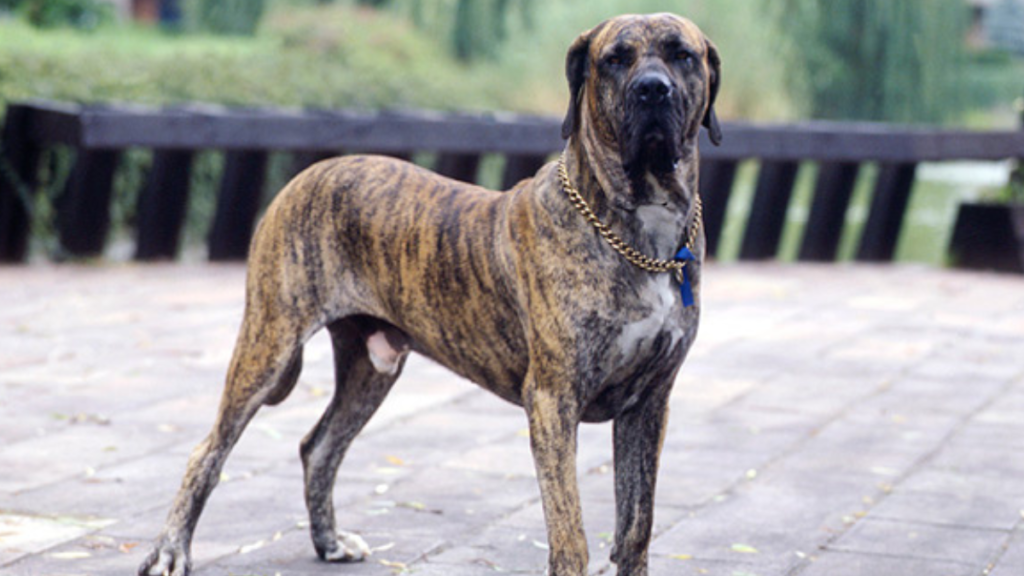
A Brazilian Mastiff, also known as a Fila Brasileiro, is a large breed of dog with a dense and smooth coat that comes in a variety of colors, requiring minimal grooming on a weekly basis. In addition to their loyalty, protector instincts, and inherent guarding abilities, these dogs are known for their guarding abilities. They are energetic and require daily exercise to stay fit and healthy. In addition to firm training, socialization should begin as early as possible and be extensive.
Brazilian Mastiffs are not recommended for novice dog owners because of their protective natures and large size. They are, however, capable of becoming excellent companions for experienced owners with the right training and care. As pets, these dogs provide reliable loyalty and protective instincts, and when properly trained, they make impressive, devoted companions.
Final Thoughts
For households with older children or mild allergies to dogs, large dog breeds with short or non-shedding coats are ideal. Generally, these breeds require only weekly brushing, requiring minimal grooming. To avoid any damage to your home, professional nail care might be required occasionally. Despite their proneness to accidental damage, large dogs can be easily groomed to maintain their appearance.
You can bring joy and companionship to your home with these big, low-maintenance dogs. Take into consideration these breeds if you are looking for a pup that won’t cause too much hassle and offers a lot of size.

